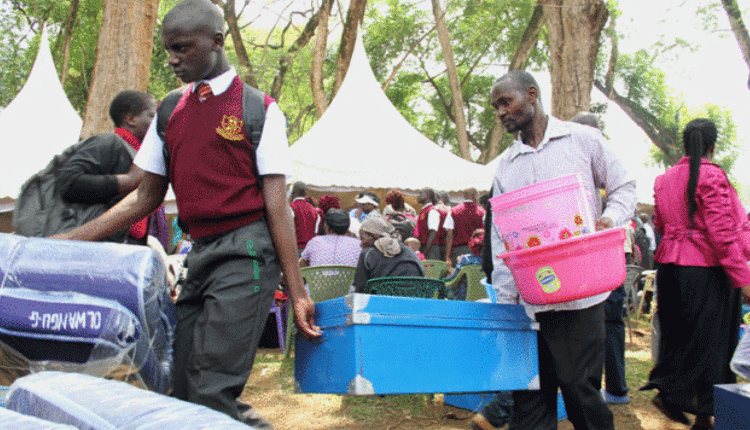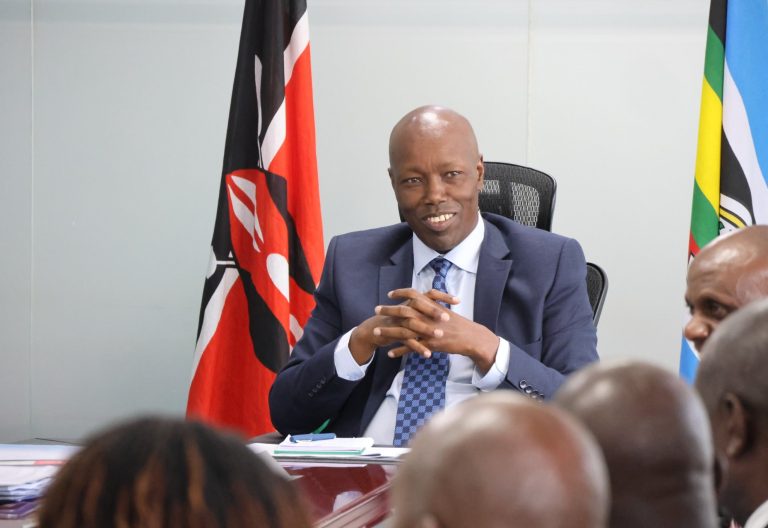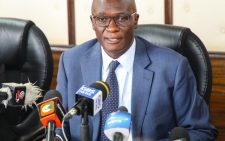Public schools sag under the weight of total transition policy

As the national government implements the 100 per cent transition policy, questions are now emerging on how public schools are coping with high enrolment against strained infrastructure.
At the same time, the puzzle of teacher-student ratio has been raised as schools are forced to not only increase the number of streams but also learners in a single class.
Some schools have up to 90 students in a single Form One classroom against a recommended size of about 40, which makes direct interaction with teachers a challenge.
According to educationist Jasper Ondimu, the 100 per cent policy was not well thought out. One of the reasons, he says, is in terms of infrastructure where classrooms are holding quite a high number of students. “You find that learners may not be attended to by the teacher in a more personal way. The 100 per cent transition seems to focus more on the quantity rather than quality of learning taking place inside these classes,” said Ondimu.
The aspect of teacher inadequacy, he said, is also coming in the way of a smooth 100 per cent transition process.
He said the country has a shortfall of about 200,000 teachers thus before implementing the policy, the government ought to have taken into account employment of more to take care of learners transitioning from primary level to secondary.
Reconsider resources
“I know the government has put in place mechanisms for intern teachers but most of them are demoralised because they are doing the same work as regular teachers but their pay is different,” said Ondimu.
In the case of dormitories, Ondimu said schools are over stretched, citing a school supposed to accommodate about 600 learners but now has more than 2,000.
According to him, some schools are converting classes to learn during the day and become dormitories at night. He also urged the government to reconsider resources it gives to schools to help in construction of laboratories for practical subjects.
“I find it quite odd when the Education Cabinet Secretary George Magoha is threatening parents with severe action if they do not take children to school. Most of them would not have wished their children to be at home,” he said.
He called for the need to reconfigure the education system, where some of the learners can just join the technical training institutions, which have since been revamped.
In Nakuru for instance, secondary schools have admitted to grappling with congestion as they implement the government policy.
A spot check in Nakuru revealed that school managers have been forced to stretch their facilities to accommodate an almost triple admission, especially in National and Extra-county schools. Schools have converted available spaces like dining halls to cope with the high numbers of students.
Nakuru West Secondary School Principal Apollo Kamau admitted that the school is filled to capacity after admitting 368 students against a slot of 340.
He said the school, which has a capacity of 1,312 students has limited classrooms and urgently requires more infrastructure.
“We have constructed additional classes but the numbers went up and recently in the mop-up exercise by the government, we were added some two students, we will just use whatever we have,” said Kamau.
In Nakuru Boys High, the school, which has a capacity of 1,350 students has also been forced to expand some of its facilities to increase capacity at the institution.
CBC funding
The Principal Mike Yator, who spoke before he received a letter of interdiction last week, said they have admitted 408 Form One students, in line with the 100 per cent capacity.
To tackle the high numbers, Yator said they had expanded a dormitory and constructed one of about 140 students which he said has come in handy in easing congestion.
In Kakamega, Governor Wycliffe Oparanya urged the national government to fund implementation of Competency Based Curriculum to ensure its success.
Oparanya said a lot of resources should be invested in infrastructure development in schools adding that most institutions will face crises occasioned by the huge population of new students.
“The new education system is good but the national government did not plan adequately before rolling it out,” he said.
Speaking at Mabole Secondary School in Butere sub-county, Oparanya said effects of the new system will be felt in 2023 when schools will be required to implement double form one intake.
It is the same script for schools in North Rift, as they struggle to meet the 100 percent transition directive from the government amid strained infrastructure.
A spot check by People Dailyin the region revealed that many parents have begun embracing the value of education following the government’s directive. It has emerged that many schools in the area lack the existing physical facilities to cope with the increasing student population.
Masii Girls’ High School in Machaoks county has over 70 students in each of the three Form One streams and has been forced to convert a dining hall into a dormitory.
In Baringo, the most affected is Kituro and Kabarnet High Schools, where the management has been forced to create temporary structures to accommodate the extra students.
Sacho High School Principal Alan Ng’eno said they had to create an extra stream to accommodate more students. “The 100 per cent is welcome but it will only achieve its objective if the government puts in more resources. The issue of social distancing remains a big challenge.”
Baringo Kenya Union of Post Primary Education Teachers Executive Secretary Zachariah Nyamboi lauded the 100 per cent transition directive but noted that schools were struggling to implement the policy. “How do you expect teachers to interact with learners under such circumstances? Many learners need close attention with the teachers due to their different capabilities,” said Nyamboi even as he called on the ministry to employ more teachers.
Influx of students
The same has been witnessed at Moi Girls and Kapsabet Boys in Uasin Gishu and Nandi counties respectively, where the management has created more streams to accommodate rise in number of students.
At the Coast region, its also an overstretched scenario. School heads from various schools in the region have reported a myriad of challenges as they struggle to adjust to the unfolding crisis.
In Mombasa for instance, a school like Allidina Visram High School with a standard capacity to accommodate up to 720 students now has close to 1,000 students.
As a result of the growing number of students, the Principal Juma Mshimu said the school facilities are overstretched.
According to Mshimu, most classrooms have at least 60 students, a figure he says has seen the teaching staff overwhelmed.
“Once a class is overpopulated, it becomes difficult for the teachers to closely monitor them as required. Where there are 60 students in one class individualised education is difficult,” he explains.
Besides learning, Mshimu says other facilities like toilets are also overstretched to an extent that hygiene may be compromised.
“Maintenance of things like toilets becomes difficult when the number is big like we are currently experiencing. Toilets become frequently dirty and get filled up within a very short time,” he added.
To balance the ratio of teachers to students, school managements are now being forced to either abandon some matters or turn the burden to parents for more funds to employ Board of Management teachers.
The school has 32 teachers employed by Teachers Service Commission (TSC) but with its current population, it requires at least 40 more teachers.
At Mama Ngina Girls, Principal Mwanahamisi Omar says with a population of slightly below 900 students they are unable to take in more students because of lack of space, even though the demand for the school is high. “It pains me because I am unable to take students with good grades just because we do not have space to house them. I cannot admit students with up to 390 marks due to lack of space,” she says.
The situation is similar in Taita Taveta County where Kenya Secondary School Heads Association branch chairman, Douglas Madeda said the area experienced an unprecedented influx of students to secondary schools.
With the intake, the number of most schools in Taita Taveta is surging fast to an extent of almost becoming a crisis as they scramble for furniture.
“If I am to use my school Challa Secondary as a case example, we had anticipated 90 students but we ended up getting 140 students. So we had to move fast to get some furniture for the students. Of course, our boarding facilities were also overstretched,” explained Madeda.
With the surging numbers and additional classes, Madeda says TSC employed teachers in most schools who could not manage the numbers and had to source for more BoM teachers. — Compiled by Irene Githinji, Roy Lumbe, Reuben Mwambingu, Dennis Lumiti and Wycliff Sang











